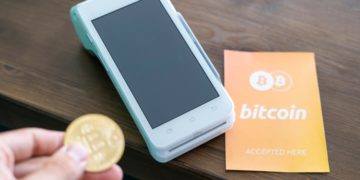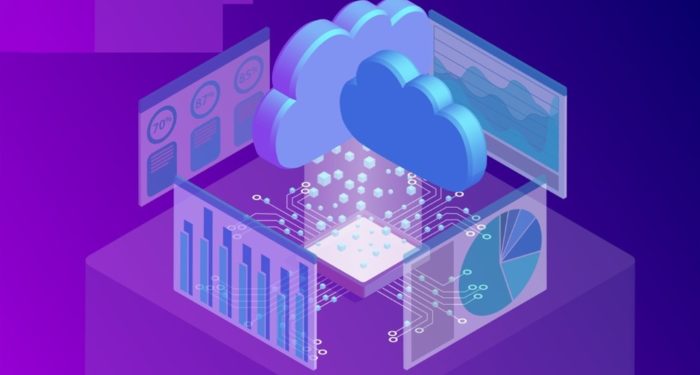Applications are essential to modern business in the digital age. However, because of their increasing complexity – which includes hybrid clouds, microservices architectures, and legacy systems – managing these applications has become very challenging. This is where Managed Application Services (MAS) have evolved from a cost-cutting measure to a vital strategic partnership.
The days when MAS only meant contracting out a monolithic application’s maintenance are long gone. These days, it stands for a comprehensive, proactive strategy to guarantee that apps are not only operational but also safe, effective, scalable, and consistently in line with corporate objectives. Strong forces, such as the ubiquitous development of artificial intelligence and the unavoidable need for strong security, are reshaping the MAS landscape.
Beyond simple software development, MAS marks a substantial advancement. An MAS provider takes on continuous accountability for the application’s performance, security, health, and development within a predictable operational expenditure model, as opposed to merely developing it. This includes everything from proactive updates and round-the-clock monitoring to user support and security patching.
Belitsoft is a partner in SaaS and custom software development with solid foundational skills that closely match the MAS model. Their main strength is creating scalable, reliable applications, particularly in the Microsoft Azure and .NET ecosystems. They thoroughly understand cloud-native architectures, modern frameworks like ASP.NET Core, and Azure services like Azure SQL Database and Azure Kubernetes Service (AKS). Any MAS provider must have this technical expertise since it guarantees that the application is well-designed and controllable right from the start.
In this article, Belitsoft’s experts examine the major developments that will shape managed application services in the future and how companies can take advantage of them to prosper in an application-centric environment.
Artificial Intelligence for IT Operations (AIOps) Ascent
In traditional app management, teams would often react to alerts after an issue had already impacted users. This model is reversed by AIOps.
What it is: AIOps platforms use machine learning (ML) and big data analytics to automate and enhance IT operations. To find patterns and correlations that are not visible to the human eye, they ingest enormous amounts of data from a variety of sources, including network sensors, infrastructure logs, application performance monitors, and even event logs.
Key Impact
- Proactive problem solving because AIOps is able to spot anomalies before a major outage happens. It could, for example, spot a slow rise in latency coming from a particular database cluster, enabling the managed services team to take the necessary steps before the service is interrupted. Consequently, the “mean time to anticipation” (MTTA) model is used in place of the “mean time to repair” (MTTR) model.
- Intelligent Alerting when AIOps correlates events to determine the underlying cause of an incident rather than inundating teams with hundreds of irrelevant alerts. This reduces “alert fatigue”, and programmers can deal with the root cause of the problem rather than just its symptoms.
- Automated Remediation when AIOps can initiate automated runbooks for the resolution of common, well-understood problems, like scaling up resources or restarting a discontinued service, without the need for human intervention, significantly minimising downtime.
Businesses will benefit from increased application availability, a more effective support staff that is more concerned with strategic enhancements than putting out fires, and a markedly better user experience.
Including DevSecOps in MAS
Security can no longer be an afterthought or a distinct silo as cyber threats become more frequent and sophisticated. The DevSecOps concept, which incorporates security procedures into the DevOps lifecycle, is being embraced by elite MAS offerings more and more. The application management stack consequently embraces a “security-first” mentality.
What it is: Security procedures and tools are being directly integrated into management workflows by managed service providers. As a crucial component of application support, this includes ongoing security monitoring, vulnerability scanning, compliance management, and threat detection.
Key Impact
- Constant Compliance: Adhering to laws like GDPR, HIPAA, or PCI-DSS is crucial for sectors like healthcare and finance. Continuous compliance monitoring is now available from MAS providers, which also automatically generate reports and flag configuration drifts that may result in violations.
- Shift-Left Security: Even when the application is being managed for continuous improvement, security testing is carried out frequently and early in the development and update cycle. This “shifts left” vulnerability discovery, making fixes more affordable and straightforward.
- Threat Intelligence and Reaction: To foresee attacks unique to particular sectors or technologies, MAS providers make use of global threat intelligence. They can identify and address threats instantly when paired with Security Information and Event Management (SIEM) systems, frequently stopping breaches before they cause serious harm.
Due to this trend, working with a MAS provider now offers enterprise-grade security knowledge, safeguarding not only the application but the entire company against financial and reputational damage.
Strategic Cloud Management and Optimisation
Cloud spend and architecture optimisation is the new challenge, but the mass migration to the cloud is essentially finished. “Cloud sprawl” – unmanaged resources that result in unexpected and rising costs – affects many businesses. As a result, advanced FinOps (Financial Operations) techniques are now a part of managed application services.
What it is: MAS providers now prioritise ongoing cost optimisation and architectural right-sizing in addition to maintaining the functionality of cloud-based apps. To analyse cloud usage, find wasteful spending, and suggest architectural modifications for improved performance and cost-effectiveness, they employ specialised tools.
Key Impact
- Cost transparency and control: Cloud service providers bring detailed dashboards that show how each dollar is used. Also, they identify underutilised resources like “zombie” virtual machines or over-provisioned storage. Finally, they suggest savings plans or reserved instances that can cut costs by at least 30%.
- Multi-Cloud and Hybrid Management: Most companies operate in either a multi-cloud (AWS, Azure, Google Cloud) or hybrid (cloud + on-premise) environment. By offering a single management plan across these environments, contemporary MAS providers ensure consistent operations, security, and governance regardless of the location of an application.
- Performance Optimisation: Optimisation is about value, not just cost. In order to make sure that spending is in line with user experience objectives, cloud providers constantly adjust the performance of applications.
By guaranteeing that cloud investments immediately result in business value, this trend turns the MAS provider into a strategic financial advisor for the IT estate.
Industry-Specific MAS Solutions
As applications become more complex and important, a one-size-fits-all approach to managing them doesn’t work anymore. MAS providers that focus on specific platforms, technologies, or industries become more popular.
What it is: Instead of being generalists, providers are developing in-depth knowledge of horizontal platforms like Salesforce, ServiceNow, SAP, or Oracle, or verticals like healthcare, financial services, or retail.
Key Impact
- Regulatory Expertise: A healthcare MAS provider will have extensive and long-standing knowledge of HIPAA compliance, guaranteeing that application management procedures are built from the ground up to meet data privacy and security regulations.
- Platform-Specific Information: More reliable and efficient managed services will result from a provider that specialises in managing Salesforce environments having certified architects and developers who are knowledgeable about the nuances, best practices, and typical pitfalls of the platform.
- Comprehending Business Procedures: Industry-specific providers are aware of the business environment in which the applications they oversee operate. They are able to prioritise and address issues according to their impact on the business because they understand how an insurance claims processing application should function in comparison to a financial trading platform.
A more strategic and successful partnership results from this trend, which enables companies to choose a partner who understands their particular difficulties and speaks their language.
Kubernetes Management and Containerisation
MAS that integrates Container-as-a-Service (CaaS) solutions is highly needed since Kubernetes cluster management necessitates a high degree of expertise.
What it is: The control plane, underlying infrastructure, security patching, scaling, and deployment pipelines are all handled by the fully managed Kubernetes services offered by MAS providers. Application development teams can focus on creating code while the provider makes the platform scalable, secure, and dependable.
Key Impact
- Faster Time-to-Market: Vendors manage the complex container orchestration layer, and software engineering teams can deliver new features and updates more regularly.
- Improved Scalability and Resilience: By automatically recovering from failures and scaling fluidly in response to demand, properly managed Kubernetes clusters can guarantee high application availability.
- Decreased Operational Overhead: Companies can benefit from a contemporary, cloud-native architecture without having to worry about hiring and managing a staff of Kubernetes specialists in-house.
Any company operating or transitioning to a microservices-based application landscape must follow this trend in order to successfully leverage the potential of cloud-native technologies.
It is evident from the trends in Managed Application Services that MAS is now a strategic business partnership rather than a tactical IT function. Technical assets are now actively optimised for security, cost, user experience, and business growth rather than just being maintained.
The need for company executives is obvious. It is now necessary to assess a MAS partner’s proficiency in these important trend areas. More than just keeping the lights on, the right partner will help light the way to increased competitive advantage, innovation, and resilience. That is more than just a service in the application-driven economy; it is a strategic requirement.
About the Author:
Dmitry Baraishuk is a partner and Chief Innovation Officer at a software development company Belitsoft (a Noventiq company). He has been leading a department specializing in custom software development for 20 years. The department has hundreds of successful projects in AI software development, healthcare and finance IT consulting, application modernization, cloud migration, data analytics implementation, and more for startups and enterprises in the US, UK, and Canada.













































































